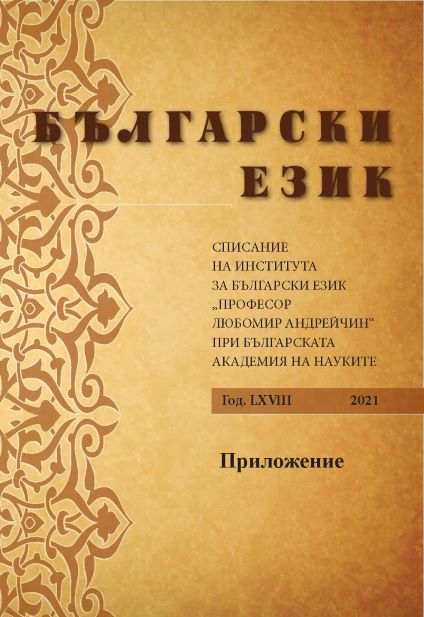Семантичната деривация като един от най-важните видове езикови иновации (Върху материал от съвременни медийни текстове)
Semantic Derivation as a Major Type of Language Innovation
(Based on Contemporary Media Texts)
Author(s): Larisa KiselevaSubject(s): Language studies, Language and Literature Studies, Applied Linguistics, Philology
Published by: Институт за български език „Проф. Любомир Андрейчин“, Българска академия на науките
Keywords: semantic derivation; metaphor; metonymy; Russian; media texts; anthropocentrism
Summary/Abstract: The study focuses on the most productive patterns of semantic derivation, namely metaphorical and metonymic transfer, exemplified by contemporary Russian media texts. The metaphorical and metonymic patterns outlined in the study are based on the principle of anthropocentrism, which is realized in two interrelated directions highlighting the cognitive nature of semantic relations: 1) person → surrounding world (external personalization); 2) surrounding world → person (description in view of the extralinguistic reality). Specific micro patterns are based on the concrete → abstract macro pat-tern. It can be argued that semantic derivation functions as a means of linguistic ex-pression of ideas about intangible entities, thus creating the respective images in the mind of the addressee. The results of the study are of relevance to lexical semantics, cognitive linguistics, media linguistics, etc.
Journal: Български език
- Issue Year: 68/2021
- Issue No: Special
- Page Range: 102-111
- Page Count: 12
- Language: Bulgarian

